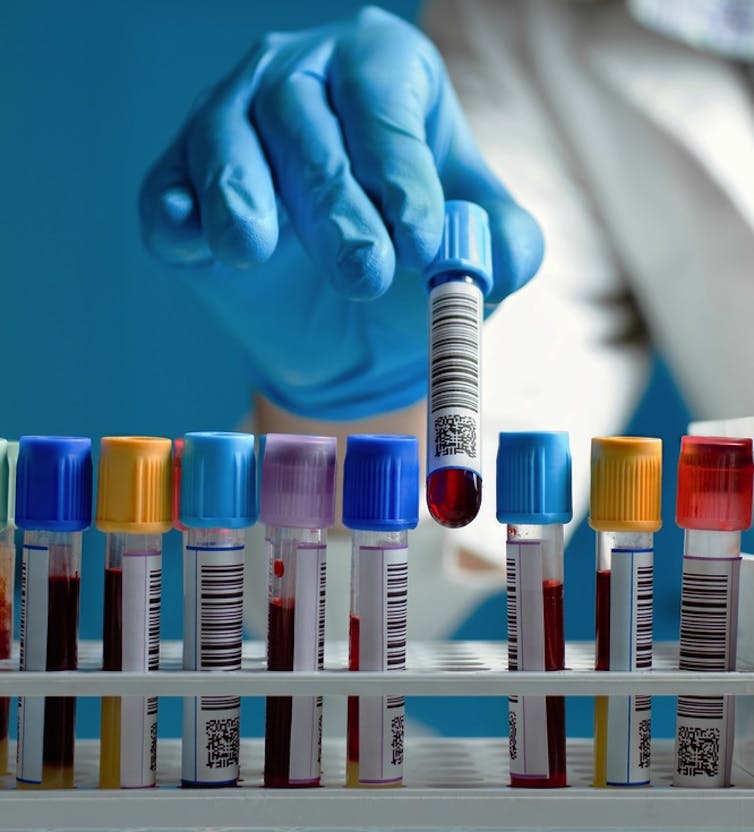The majority of vitamin D your body needs comes through exposure to the sun.

Vitamin D has emerged as “the vitamin of the decade”, with a long and growing list of maladies supposedly caused through its absence or prevented through its bountiful supply.
But is there adequate evidence for the wonders claimed for vitamin D or are we getting a bit carried away?
Before you answer that, here are some common misconceptions about vitamin D that you should know about.
- Everybody knows their vitamin D level should be above …?
It’s a fairly universal agreement that a blood concentration of 25-hydroxyvitamin D (the usual measure of vitamin D status) below 25 nanomoles/litre (nmol/L) should be considered a serious deficiency.
Anyone who is tested and returns results like that needs to talk to their doctor about proper management. But knowing what levels are sufficient is trickier.
In 2010, the Institute of Medicine in the United States concluded that bone health is the only condition for which there’s an established causal association with vitamin D. They found:
health benefits beyond bone health — benefits often reported in the media — were from studies that provided often mixed and inconclusive results and could not be considered reliable.
So there’s clearly contention about how much is enough. A level of 50nmol/L is sufficient to optimise the bone health of the majority of the population. But other groups recommend 75nmol/L, 100nmol/L or higher (note that US sites provide recommendations in nanograms per millilitre or ng/ml – multiply by 2.5 to convert to nmol/L).
- There’s a vitamin D deficiency epidemic in Australia.
Actually, what is most clear is that there’s an epidemic of vitamin D testing in Australia – a 94-fold increase from 2000 to 2010. Costs to Medicare have gone from $1.3 million in 2000/2001 to $140.5 million in 2012/2013.

Shutterstock
Some populations are clearly at risk of vitamin D deficiency. People who habitually cover their skin while in public for cultural or other reasons, for instance, and the immobile elderly who are rarely sun exposed. But the evidence of population-wide vitamin D deficiency is thin and unconvincing, at least in part because vitamin D tests are problematic and the desired level is hotly debated.
If an unreliable test is used and the “sufficient” bar is set too high and more people are tested, then vitamin D “deficiency” will seem more common.
- A vitamin D test gives a simple answer and is accurate and reliable.This is definitely not so.
If you take blood from one person and split it up into several samples and test these, you can get very different results between the samples. And it’s not just a little bit different.
A recent Australian study assessing the consistency and accuracy of vitamin D tests found that between one-in-five and one-in-three participants were misclassified as “deficient”. The vitamin D test results for a single blood sample returned enormously different results depending on which type of test was used and where the sample was analysed.
Four samples (out of approximately 800) differed by more than 100nmol/L (that’s double the usual “sufficient” level of 50nmol/L) across two different tests, and 10% of the results differed by more than 50nmol/L. These are different measurements of the same sample!
Fortunately work is underway to improve this abysmal situation. A group of international agencies are developing a reference measurement procedure and laboratories will be able to assess the performance of their test against this new standard.
- Vitamin D is the elixir of life, which is sometimes presented as vitamin D deficiency will kill us all.
Given the challenges of accurately measuring levels of this vitamin and the disagreement on where the goalposts are, doing good consistent research to determine the benefits and detriments of high or low vitamin D is pretty difficult.
There’s no doubt that severe vitamin D deficiency causes rickets in children, and an equivalent condition known as osteomalacia in adults. Old pictures of children with bowed legs or knock knees were often of children with rickets.
And there’s pretty good evidence that supplementation with vitamin D and calcium, in combination with weight-bearing exercise, can decrease the risks of fractures in the elderly. Particularly in people who have low levels of vitamain D or calcium (or both) before starting supplementation.
But most evidence for the other reported benefits of vitamin D comes from weak studies, and there’s little support from better studies.

Shutterstock
- Given it is such good stuff, the higher my vitamin D level, the better.
Vitamin D has traditionally been thought to be safe, requiring very high levels (greater than 400nmol/L) to reach toxicity. This toxicity cannot occur through sun exposure, but can through excessive supplementation.
But as we delve more into the vitamin D story, studies are reporting risks to health at even modestly high levels, such as 80-100nmol/L.
The evidence is not yet strong (much like the evidence of vitamin D’s benefits) but this type of association is typical of many vitamins and nutrients, where both too little and too much are bad for you .
- Sunscreen stops vitamin D production.
The majority of vitamin D your body needs comes through exposure to the sun, specifically from shorter wavelength UVB radiation that is also the main cause of skin cancers. It may seem logical that if sunscreen stops the damaging UVB reaching sensitive skin cells, it will also stop vitamin D production by those same cells.
But even if sunscreen is applied very thickly, vitamin D production is reduced but not stopped. And, of course, who puts it on that thickly?
Most of us apply sunscreen because we are going to be in the sun. We put on a thin layer that is not too icky. Under these conditions, sunscreen actually doesn’t seem to make a lot of difference to vitamin D production.
There’s a lot we don’t know about vitamin D. But we do know that Australia has the highest skin cancer incidence in the world: hundreds of thousands of skin cancers are removed each year at a cost of more than $700 million and there are over 2,000 deaths from it.
Excessive sun exposure is the main cause of that problem. Getting the balance between vitamin D levels and sun protection right is an important health goal.
More research is needed and it should be Australian research because our circumstances are different to those in the United States and Europe. We can’t just take results from there and use them here.
While a simple solution would be nice, an evidence-based one is preferable and worth pursuing. Stories about our epidemic of vitamin D deficiency drive excessive testing at high cost and unknown value. And they probably just end up selling more vitamin supplements.
But they also create confusion and diminish people’s confidence and resolve to reduce excessive UV exposure.
Robyn Lucas, Associate Professor of Epidemiology, Australian National University and Terry Slevin, Honorary Senior Lecturer in Public Health at Curtin University; Education & Research Director, Cancer Council WA; Chair, National Skin Cancer Committee, Cancer Council Australia
This article is republished from The Conversation under a Creative Commons license. Read the original article.
For more news your way, download The Citizen’s app for iOS and Android.






